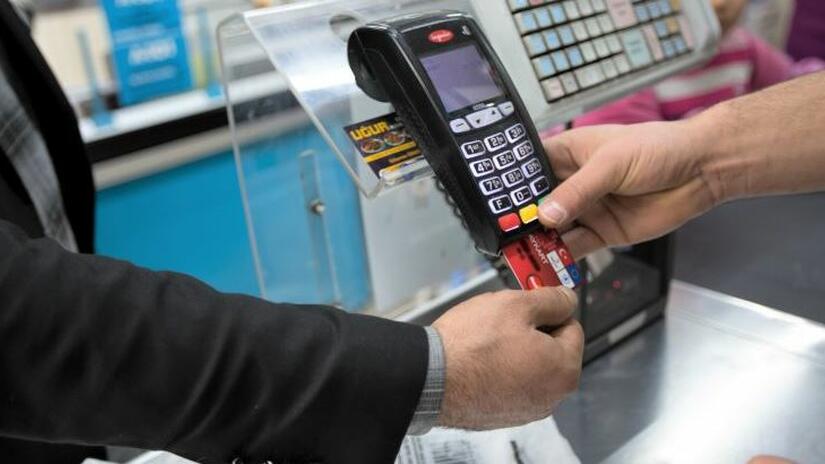Many people affected by humanitarian crises think their priority needs are not being met by humanitarian aid.
Cash assistance is one critical approach that is helping responders better put the needs and capacities of affected people at the heart of humanitarian action. For the Red Cross and Red Crescent Movement, it has become an integral part of our work.
Most recently, with funding from the European Union, the Turkish Red Crescent and IFRC are implementing a unique cash-assistance programme in Turkey. It enables more than 1.7 million most vulnerable refugees to meet their basic needs and rebuild their lives. The Emergency Social Safety Net (ESSN) programme provides a blueprint for how cash assistance can be better used in the future.
1. It is people-centred
According to a Ground Truth Solutions survey, almost half of the Rohingya refugees in Bangladesh sold in-kind assistance offered to them so that they could use the money to purchase goods and services they need.
Cash puts an end to aid being limited to the goods and services that humanitarian organizations deliver and gives people the freedom to spend the cash on what they need most.
Providing affected populations with cash means more than addressing their true needs, it also means dignity. Having an option to buy the things they need in a shop rather than waiting in a queue for goods also gives the aid recipients a sense of normality that has been lacking from their lives due to conflict.
“The cash assistance is granting us freedom of choice and returning a degree of dignity to our lives.” - A refugee receiving cash support from ESSN (WFP report from 2018).
Cash assistance also offers them the most important opportunity, having control over their own recovery. Refugees who take ESSN cash assistance are less likely to consult to negative coping strategies like reducing the quality and quantity of the food consumption, getting into debt and taking their children out of school.
2. It’s more cost-effective and can ultimately, reach more people
Delivering cash assistance often costs less than delivering in-kind assistance thus reaching more people in need. How much money is required to manage an operation? How much money is required to transport and store aid in a warehouse?
By taking advantage of digital payment systems (like debit cards and SMS) cash-based assistance can greatly reduce costs spent on logistics, transportation and human resources.
Compared to the previous humanitarian basic needs assistance provided, the ESSN resulted in significant reductions in administrative costs, leading to at least 90 per cent of all ESSN funding going into the hands of those in need and reaching as many as 1.7 million people.
3. It empowers local economies and communities
Supporting people in need with cash also means supporting the host population. As the migration deeply affects those seeking safety, it also creates a completely new situation for the hosting community.
Use of cash-based assistance can help people in need to support local markets. This can greatly reduce possible tensions, increase support for humanitarian aid from locals and spark the first steps of integration.
Although there is room for development, the ESSN has the potential to influence social cohesion between refugees and host communities, according to a WFP study. About half of the refugees who attended focus group discussions said that they had established good relations with their Turkish neighbours.
4. It is easy to deliver
Conflicts, natural disasters or health emergencies - each bring with them difficult conditions to work in, including challenges in access. If markets are not too weak or supply is sufficient, cash enables assistance to vulnerable people in extraordinary times.
Operating under the current conditions of COVID-19 poses many challenges, particularly with restricted or forbidden movement of goods and resources. Sending cash to refugees digitally limits the risk of infection to those we serve as well as host communities and our frontline workers.
5. It enables a more effective, efficient, and transparent humanitarian sector
Cash assistance ensures humanitarian organizations are more accountable to both donors and affected people. It increases the transparency of operations by showing how much aid actually reaches the target population. It also addresses people’s true needs as it gives them the ability to decide what they require.
In April, Turkish Red Crescent’s ESSN hotline answered 1.2 million calls, sent more than 1.3 million SMSs and reached out to more than 85,000 refugees thorough its multilingual Facebook page. ESSN monitoring data indicates that the awareness amongst refugees of the ESSN and its application procedures is very high and only a small proportion of refugees lack information on the ESSN at any point in time.
The use of easily verifiable demographic criteria satisfies the donors need for transparency and accountability, while also ensuring that refugees themselves have full information on why they are (not) included in the ESSN program.
---
As ESSN’s unique approach and scale shows cash is people-centric, makes the most out of limited budgets, increases the speed and flexibility of the humanitarian response, improves local economies, reaches the most vulnerable even in insecure environments and enables us all to be more accountable to the people we serve.
Cash doesn’t replace all humanitarian services. However, under the right circumstances, cash offers a massive opportunity for us to put communities’ at the centre of our response.
This article covers humanitarian aid activities implemented with the financial assistance of the European Union. The views expressed herein should not be taken, in any way, to reflect the official opinion of the European Union, and the European Commission is not responsible for any use that may be made of the information it contains.

